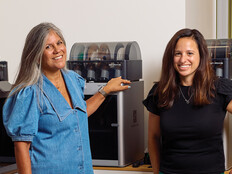How to Incorporate QR Codes in the Classroom
Take advantage of the personal mobile-computing devices already present in many of today's classrooms by incorporating Quick Response technology into the curriculum. These black-and-white QR codes, as they're commonly known, contain encoded modules of information that students can scan with their smartphones, cell phones or tablets and refer to as needed. This ready access can be helpful when the information in question pertains to a homework assignment or other classroom activity.
Lesson Description
Students may forget to bring their gym shoes, textbooks or lunch to school, but there's one thing they never forget: their cell phones. This lesson was designed to get students moving around the classroom at the beginning of a unit on the American Revolution while saving important introductory course content in their phones.
Begin by having students install QR code readers on their phones (students who don't own a phone should pair off with a classmate who does). A number of free readers are available for most mobile-phone operating systems, including Android, BlackBerry, iOS and Windows. Find them by browsing each platform's application marketplace; BeeTagg QR Reader and the Kaywa Reader are two that are commonly used.
Next, assign each student a topic related to the American Revolution, such as the Boston Massacre or the Olive Branch Petition. Have students research and write short narrative summaries of the key points of their assigned topics and then submit their work for review using Google Docs. Once students have incorporated any suggested edits and their summaries are approved, publish the work online via Google Docs and Wikispaces. Each piece that's published to the web will then have a unique, lengthy URL assigned to it. Have students copy their individual URLs, paste them into QR Droid's QR code generator and print out the resulting QR codes. BeeTagg and Kaywa also offer good tools for creating QR codes.
To conclude this activity, have students use their phones to scan each other's QR codes. Once they do this, they will be able to open the Google documents of their classmates' topic summaries using their QR code reader app to review or study the content whenever they have their cell phones with them.
Subject Area
This lesson was designed for a high school social studies unit on the American Revolution, but it can be adapted for most content areas and grade levels.
Curriculum Standards
This lesson fulfills several of Maine's Learning Results: Parameters for Essential Instruction for Social Studies, as well as the National Educational Technology Standards for Students set forth by the International Society for Technology in Education.
Resources
- BeeTagg QR Reader: beetagg.com/en/beetagg-qr-reader/
- Kaywa Reader: reader.kaywa.com
- Google Docs: docs.google.com
- Wikispaces: wikispaces.com
- QR Droid: qrdroid.com/generate
Grading Rubric
Grade students on content accuracy and writing quality.
Teaching Tips
- If your students have never used QR readers, introduce them to the technology by scanning fun things, such as the QR codes in sports and entertainment magazines.
- If you're in an area with poor mobile coverage, have students switch their phone's data delivery settings to the school's wireless network.
- Create a classroom QR bulletin board that students can add to throughout the year. That way, any time they need to revisit course materials, they can scan the codes on the bulletin board.







